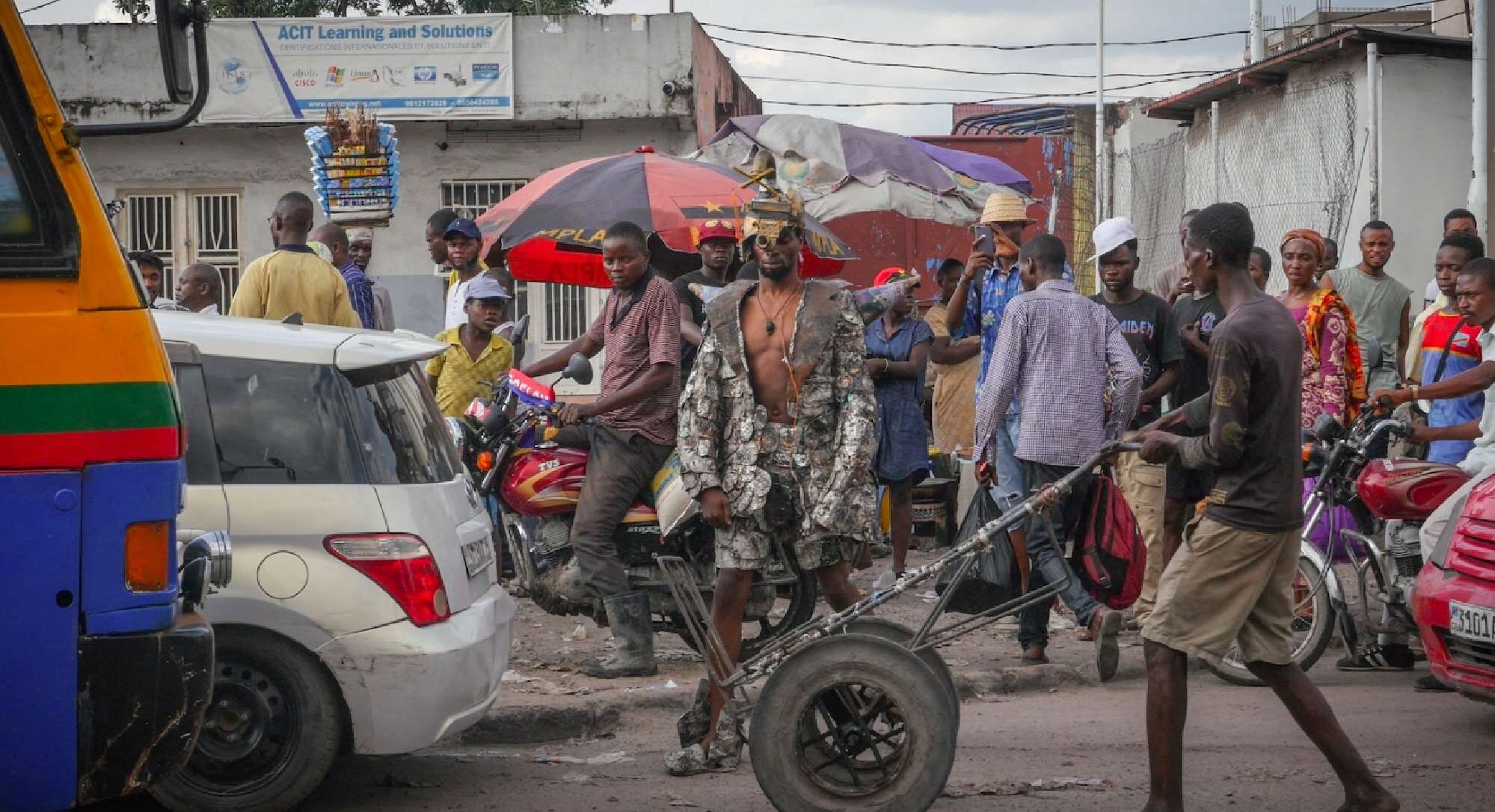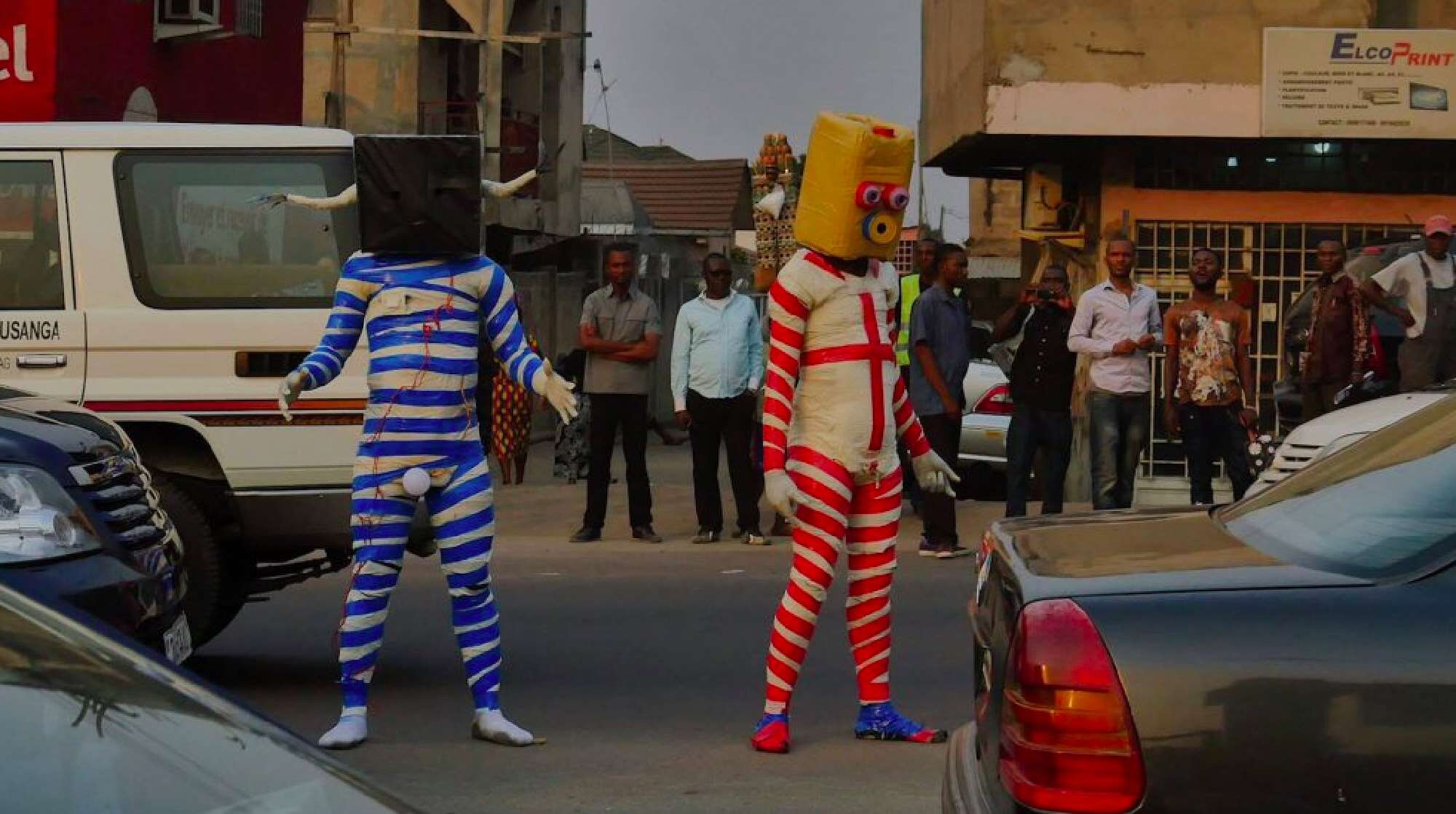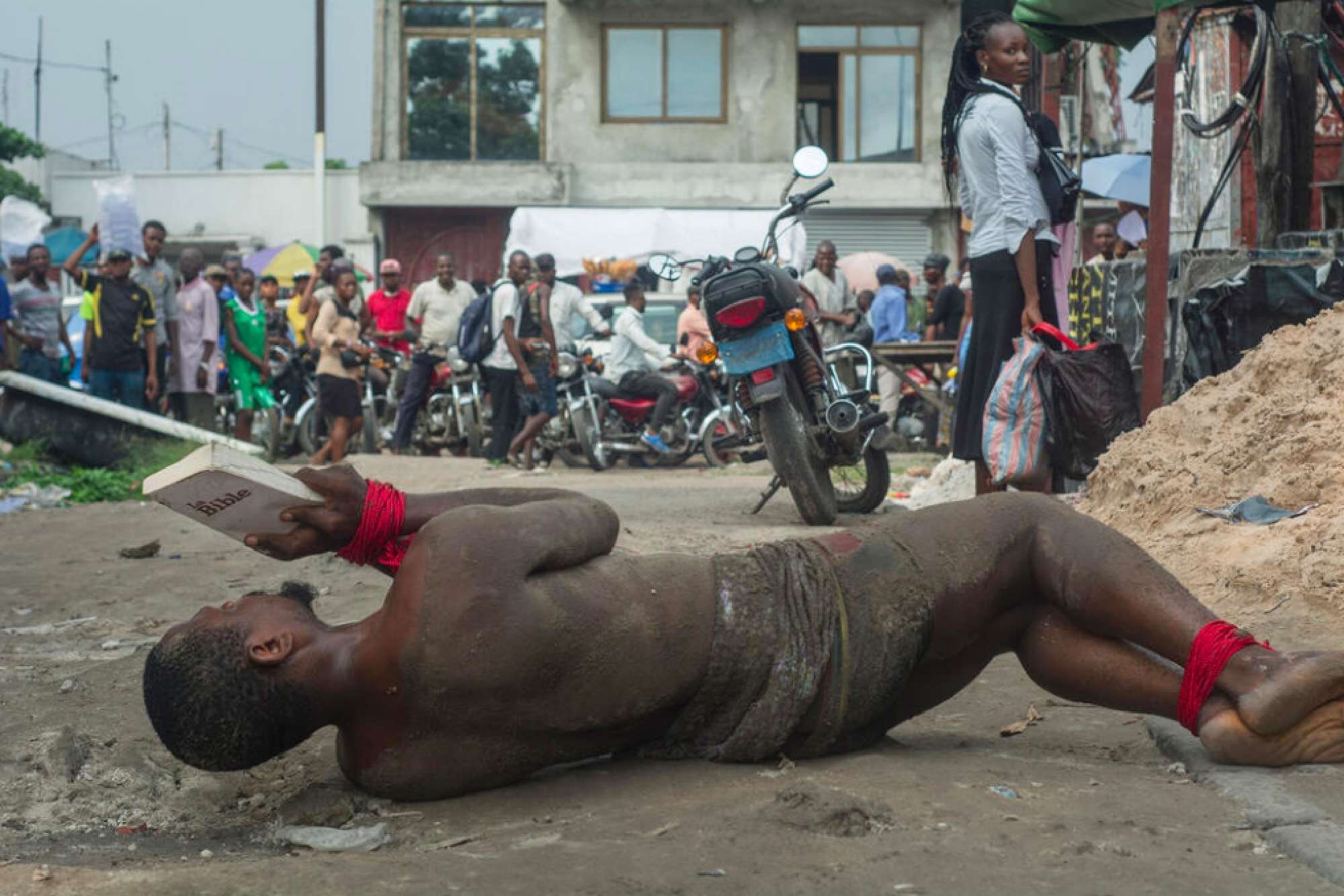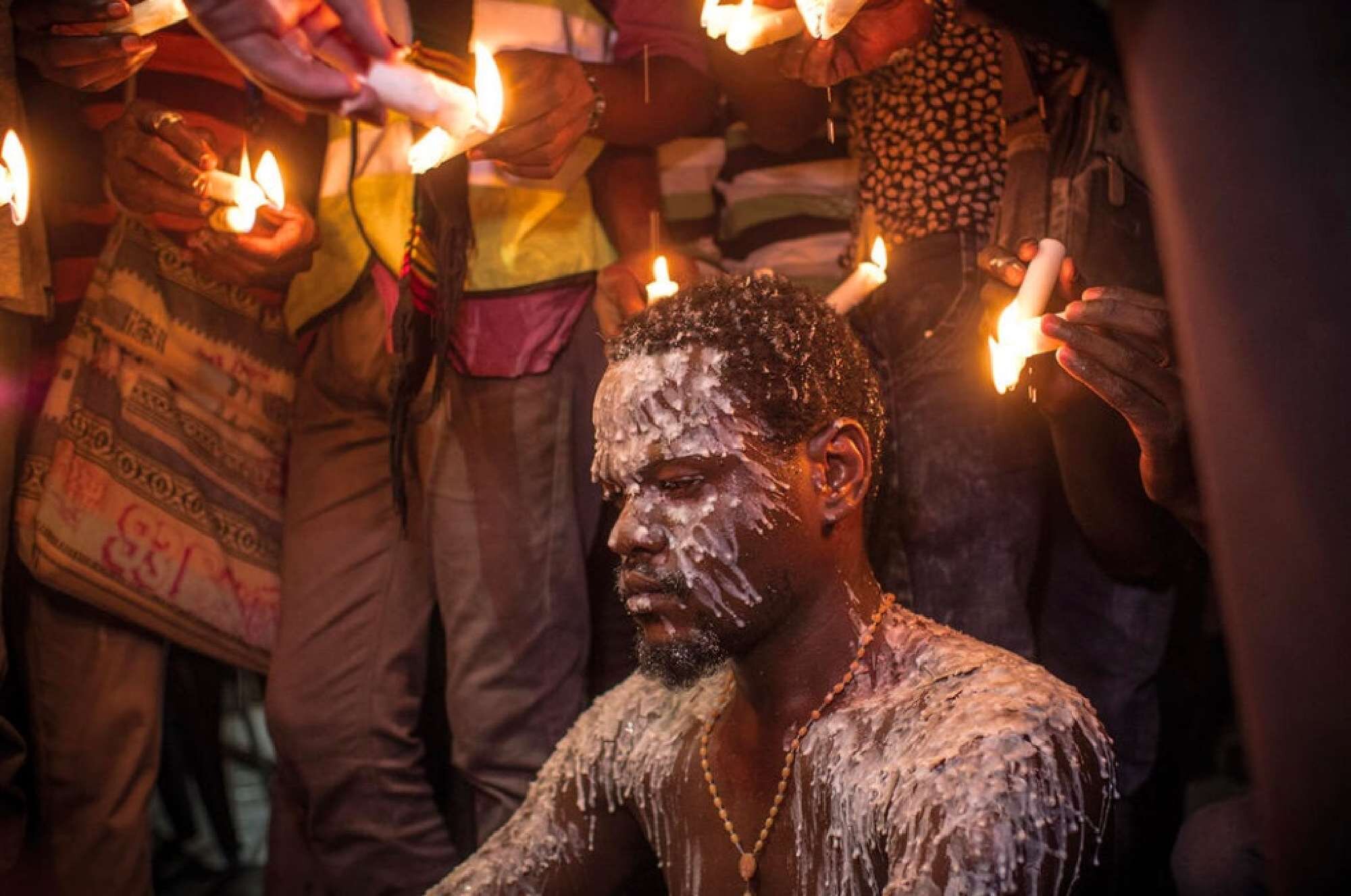Renaud Barret's new film reveals the powerful art scene on the streets of Kinshasa
In the midst of the 14 million people that populate Kinshasa, visual artists, musicians and performers are trying to make sense of the social and political chaos that plague the Democratic Republic of the Congo. Through various mediums, from recycled objects to body art and happenings, these artists are fighting for change. But at what price? French filmmaker Renaud Barret documented this street ebullition over the course of a five-year production for his film System K (Système K). After his critically acclaimed documentary Benda Bilili!, that follows the rise of DRC street musicians Staff Benda Bilili, System K is his new engrossing hit, which debuted at Berlin International Film Festival and is now on release.
At first, what draws you into the film is the afro-electronica of KOKOKO!, which envelops the documentary. Barret has worked with the band from the city’s ghetto Ngwaka for several years. They reuse technology waste to make musical sounds and create instruments from recycling objects. Now signed to British label Transgressive and receiving international recognition, KOKOKO!’s film score is composed of raw music that mirrors the city’s emergency.
This frenetic sense of creativity is what prompted Barret to leave his job in advertising in Paris and settle to Kinshasa 15 years ago. “I was immediately struck by the fact that everyone here, from the age of 7 to 77, is a character. Everyone holds a strong story inside of them,” Barret says. “I listened to many speak about their life journey, then bought some cameras and started to film. This city changed me because it shed light on my purpose. It was obvious in Kinshasa that I could become a filmmaker, whereas in France I never felt this calling.”
Once he began to document his adopted home, he encountered artistic outbursts around every corner. “I discovered a city of music, a city of art, where the people are by default creators and carry an incredible odyssey. It’s a place brimming with energy that inspires hope, a city with its convictions,” he says. “Here everyone is an itinerant artist. At the start, it’s a question of survival: people struggle to get electricity for example, so they channel this frustration into what then becomes an outlandish but incredible piece of artwork.”
What strikes the filmmaker is how the artists don’t feel the need to have a camera to perform, rather it’s a form of protest that draws attention to the country’s political state. “I first started meeting creatives at the city’s Fine Arts Academy and then discovered others in the ghettos. However, it was difficult to get them on board to document them as most are leery about cameras,” he recalls. “Art here is so organic and primal, there are no codes and monetisation. I often asked myself, what do they have to gain from this? The more I followed them, the more I understood their claims.”
Barrat learnt that many of them lived through the reign of President Mobutu (1965 to 1997) when the country’s currency had value and there was relative stability and nation building. “After Mobutu’s departure, Congo collapsed: those born in the 80s and 90s saw their family lose everything. Life became sordid: militias coming into people’s houses, pillages, chaos... Artists fed up with this system now show this reality in their work.”
The first artist presented in System K, Freddy Tsimba, enjoys an international sculpting career that enables him to mentor younger creatives of Kinshasa. His infamous machete house sculpture denounces the killings in East Congo, causing police to violently take away members of the crowd contemplating Tsimba’s work. “Living in Kinshasa is in and of itself a performance, the city is a large exhibition and art is everywhere. We have to always create, to not sink into darkness,” Tsimba says.
A lone performer, Michel Ekeba, assembles pieces of burnt and melted plastic and electronics to construct a space suit. He dubs himself Kongo Astronaut as he strolls around the streets flying over the negative realities. He draws attention to himself so that people can contemplate the plundering of his country’s natural resources by multinationals to make electronic goods that then return to the homeland as waste.
“I discovered a city of music, a city of art, where the people are by default creators and carry an incredible odyssey”
Next, we have the duet Flory and Junior, who live in a community with no running water. To criticise this lack of drinkable water - in a city located by the Congo River - Flory and Junior create the costumed characters Water Man and Electricity Man and parade around the streets. This is their “tactic of survival,” they say. “The present moment is the only certainty, we have to live day by day.”
Géraldine Tobé’s story ensues, as she discusses the accusations she suffered as a child of a sorcerer who went through several exorcisms. This painful past is reflected in her art, as she uses the smoke from petrol lamps to create her canvases. “I breathe toxic air and therefore toxic stories when I make art,” she remarks.
Religion plays an important role in Congolese society, but not always for good. Yas Llunga perfectly depicts the people’s bondage to the church in his performance Voluntary Slavery. He was a victim of excommunication because pastors declared he was a child sorcerer. Today he believes revival churches are polluting DRC by encouraging the population to search for a master rather than independence. For his presentation he distributes candles to people around him who then let the wax drop on his body. Later 200 portraits of pastors are hooked on his skin. Meanwhile Strombo Kayumba, a handicapped dancer, puts devil’s horns on his head to symbolise the corruption that runs through politics and in the evangelical church.
In the final and arguably the most gut-wrenching performance in the film, Majestik presents Blood Bath. The artist stands in a bathtub that is carted around the city, and after the sacrificing of a goat, he uses its blood to fill up the bath and even drinks from it before spitting the blood out. Tobé walks behind with the dead goat cradled in her arms. Their message is that everyone in Congo has a murderer’s mentality. “We live in the pit of the fire, but we don’t burn,” Majestik says. By putting his body in danger, he reflects the direct suffering of the country from the massacres in Eastern DRC and fratricidal wars fed by foreign powers ravage the land.
So what does Barret believe will be the outcome of System K? “The problem artists have is gaining visibility. Freddy and Geraldine had already been scouted way before the film. Performers like Strombo, Majestik, and Kongo Astronaut, however, can benefit directly from the movie,” he says. “System K isn't a film with an end, it will hopefully be the start something new for them. In DRC, there are no museums, galleries or collectors. The majority of the population is suffering too much to be able to find interest in visual arts. The internet is faulty and expensive to use, so artists can't use this medium to promote their work either, and there are constant blackouts. What's certain is that the film gives them a platform to make themselves known to an otherwise exclusive art world.”
System K is on release in France and USA
Words Christine Noumba Um
Photography Renaud Barret
Published on 15/02/2020









